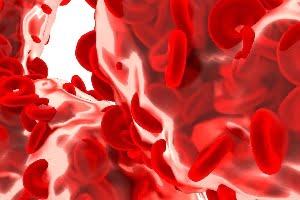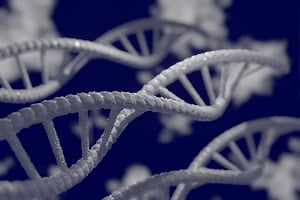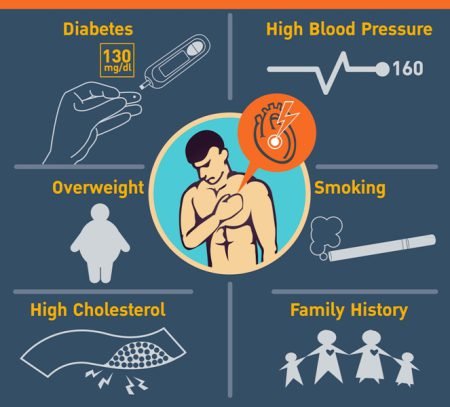Understanding Thalassemia Trait
- Updated on: Jul 29, 2024
- 4 min Read
- Published on Jul 22, 2019

Thalassemia
Thalassemia is an inherited blood disorder which occurs when the body is unable to make enough of a protein called hemoglobin. In the absence of abundant hemoglobin, the body’s red blood cells don’t function properly and they last for very shorter periods of time. As a result there are fewer healthy red blood cells traveling in the bloodstream. The function of red blood cells is to carry oxygen to all the cells of the body and the oxygen is a sort of food used by the cells so as to function properly. Therefore, when there are not enough healthy red blood cells, there is also not enough oxygen delivered to all the other cells of the body, which may in turn cause various problems in a person such as tiredness, weakness or breathlessness. Such a condition is called anemia. People with thalassemia may have either mild or severe anemia. Severe anemia can cause organ damage which may ultimately lead to death.
Most people with different types of thalassemia get to know about their condition in childhood, since they experience symptoms of severe anemia early in life. People with less severe forms of thalassemia find out about the condition because they experience symptoms of anemia, or may be because a doctor finds anemia on their routine blood tests or a test done for some other reasons. Since thalassemias are hereditary, the condition sometimes runs in families. In some cases, thalassemia is diagnosed because their relatives suffer with a similar condition. Besides, people who have family members from certain parts of the world are at higher risk for getting thalassemia. Traits for thalassemia are more commonly found in people from Mediterranean countries, like Greece and Turkey, and in people from Asia, Africa, and the Middle East.
What is Thalassemia Trait?
Thalassemia is a medical condition in which the body is unable to make enough hemoglobin which ultimately results in anemia. There are four genes in the body which are responsible for making of hemoglobin. Any problem with these genes can cause thalassemia, but when only one among the four genes is affected, the individual has no symptoms and is known as having a thalassemia trait. People who have thalassemia trait (also called thalassemia minor) carry the genetic trait for thalassemia but do not suffer from any health problems except a mild anemia. A person may have either alpha thalassemia trait or beta thalassemia trait, depending upon which form of beta protein is absent.
What Causes Thalassemia Trait?
Thalassemia is a hereditary disease in which some abnormal genes are passed along from parents to their children. A person can develop thalassemia trait if he receives one of the genes from a parent.
What are the Symptoms of Thalassemia Trait?
People who have thalassemia trait do not show any symptoms related to thalassemia, such as anemia.
Who can Carry a Thalassemia trait?
Anyone can be a carrier of thalassemia trait, but it is more commonly found in people from certain ethnic backgrounds. It has been found that thalassemia mainly affects people with backgrounds around the Mediterranean (Italy, Greece and Cyprus), India, Pakistan and Bangladesh, the Middle East, China and Southeast Asia.
What is Beta Thalassemia Trait?
Beta thalassemia affects the hemoglobin present in the red blood cells. All red blood cells contain hemoglobin, which helps in carrying oxygen from the lungs to all other parts of the body. People with beta thalassemia are unable to make enough hemoglobin. People having a beta thalassemia trait consist both normal hemoglobin A and the abnormal beta thalassemia (β) hemoglobin in their red blood cells. Beta thalassemia is commonly found in people of African, Mediterranean, Asian and Middle Eastern descent. Such people with a beta thalassemia trait do not have the beta thalassemia disease or sickle cell disease. Also, they cannot develop these diseases later in life, instead can pass beta thalassemia trait to their children. Beta thalassemia trait is passed from one’s parents, like hair or eye color. Normally, beta thalassemia trait does not cause any health issues. Beta thalassemia trait is also called as beta thalassemia minor. If one parent consists of beta thalassemia trait and the other parent has normal hemoglobin A, there is a 50 percent (almost 1 in 2) chance that each child will be born with a beta thalassemia trait.
What Happens When Both Parents Have a Beta Thalassemia Trait?
If both parents have beta thalassemia trait there is a 25 % (1 in 4) chance with each pregnancy of having a child with Beta Thalassemia disease, which is a lifelong illness and can result in serious health problems. In such cases, the possible outcomes with each pregnancy are:
- 50 % (1 in 2) chances of having a child with beta thalassemia trait
- 50 % (1 in 2) chance of having a child without beta thalassemia trait
- 25 % (1 in 4) chance of having a child with beta thalassemia disease
- 50 % (1 in 2) chance of having a child with beta thalassemia trait
- 25 % (1 in 4) chance of having a child without trait or disease
What is Alpha Thalassemia Trait?
Alpha thalassemia trait has two different types. The first type has one alpha gene missing on each chromosome (α-/α-) and is called as the trans form of alpha thalassemia trait. The trans form of alpha thalassemia trait (α-/α-) is commonly found in African-Americans (20-30%) and in people of African descent. The second type of alpha thalassemia trait has two missing alpha genes on the same chromosome (αα/–) and is called as the cis form of alpha thalassemia trait. People with alpha thalassemia trait have no risk of developing hemoglobin H cell disease or hydrops fetalis later in life.
Why is it Important to Know About Alpha Thalassemia Trait?
Alpha thalassemia trait is inherited from the parents, like hair or eye color. If both parents have the trans form of alpha thalassemia trait (α-/α-), all of their children will have alpha thalassemia trait, which does not cause any health problems. People with alpha thalassemia trait can have small red blood cells and a low red blood count resulting in mild anemia.
What Happens When One Parent has Alpha Thalassemia Trait and the Other Parent is a Silent Carrier?
If one parent has the cis form of alpha thalassemia trait (αα/–), and the other parent is a silent carrier (αα/α-), there is a 2 % (1 in 4) chance with each pregnancy of having a child with hemoglobin H disease. People with this disease have many issues like an enlarged spleen, low red blood cell counts, gallstones, developmental delays and other health problems.











